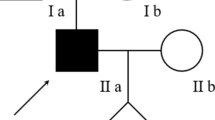Abstract
Purpose
The aim of this study is to estimate the weight of each relevant factor in such unions of inadvertent consanguinity and to determine a “reasonable” limit for the number of children per donor, matching the probability of inadvertent consanguinity arising from the use of sperm donor in assisted reproduction with that of such a union arising from false paternity.
Methods
In this study, we applied to Spanish data a mathematical model of consanguineous unions, taking into account the following factors: maximum number of live births/donor, fertility rate, average number of births per donor in a pregnancy, donor success rate, matings per phenotype, number of newborns/year, and number of donors needed in the population/year and births by false paternity.
Results
In Spain, the number of inadvertent unions between descendants of the same donor in Spain has been estimated at 0.4/year (one every two and a half years), although this frequency decreases as the reference population increases. On the other hand, the frequency of unions between family members due to false paternity has been estimated at 6.1/year. Thus, only 6% of such unions are due to the use of donor sperm.
Conclusion
A total of 25 children per sperm donor are needed to align the probability of inadvertant consanguinity arising from the use of assisted reproduction with that due to false paternity. Therefore, we consider this number to be the maximum “reasonable” number of children born per donor in Spain.



Similar content being viewed by others
References
Kupka MS, D’Hooghe T, Ferraretti AP, de Mouzon J, Erb K, Castilla JA, et al. Assisted reproductive technology in Europe, 2011: results generated from European registers by ESHRE. Hum Reprod. 2016;31:233–48.
Sawyer N, McDonald J. A review of mathematical models used to determine sperm donor limits for infertility treatment. Fertil Steril. 2008;90:265–71.
Janssens P, Nap A, Bancsi L. Reconsidering the number of offspring per gamete donor in the Dutch open-identity system. Hum Fert. 2011;14:106–14.
Janssens P, Thorn P, Castilla JA, Frith L, Crawshaw M, Mochtar M, et al. Evolving minimum standards in responsible international sperm donor offspring quota. Rep Biomed Online. 2015;30:568–80.
Serre J, Leutenegger A, Bernheim A, Fellous M, Rouen A, Siffroi J. Does anonymous sperm donation increase the risk for unions between relatives and the incidence of autosomal recessive diseases due to consanguinity? Hum Reprod. 2014;29:394–99.
Wang C, Tsai M, Lee M, Huang S, Kao C, Ho H, et al. Maximum number of live births per donor in artificial insemination. Hum Reprod. 2007;22:1363–72.
Expansión. Datos Macro 2014. [Internet].2016 [cited 2016 Jun 4] Available from: http://www.datosmacro.com/demografia/natalidad/espana
Instituto Nacional de Estadística. INE 2014. [Internet]. 2016 [cited 2016 Jun 4]. Available from: http://www.ine.es/
Sociedad Española de Fertilidad: Registro SEF 2013 [Internet]. 2016 [cited 2016 Jun 4]. Available from: SEFhttps://www.registrosef.com/public/docs/sef2013_IAFIV.pdf
Bellis M, Hughes K, Hughes S, Ashton J. Measuring paternal discrepancy and its public health consequences. J Epidemiol Community Health. 2005;59:749–54.
American Society for Reproductive Medicine; Society for Assisted Reproductive Technology. Recommendations for gamete and embryo donation: a committee opinion. Fertil Steril. 2013; 99:47–62.
Shenfield F, de Mouzon J, Pennings G, Ferraretti AP, Andersen AN, de Wert G, et al. Cross border reproductive care in six European countries. Hum Reprod. 2010;25:1361–68.
Luceño F, Castilla JA, Gómez-Palomares JL, Cabello Y, Hernández J, Marqueta J, et al. Comparison of IVF cycles reported in a voluntary ART registry with a mandatory registry in Spain. Hum Reprod. 2010;25:3066–71.
EUROCET 128. Building references Compendia for the application of a single European coding system for tissues and cells. 2016 [Internet].2016 [cited 2016 Jun 4]. Available from: http://www.banchetessuto-osso.it/128/
Author information
Authors and Affiliations
Corresponding author
Additional information
Capsule A total of 25 children per sperm donor are needed to align the probability of inadvertant consanguinity arising from the use of assisted reproduction with that due to false paternity.
Rights and permissions
About this article
Cite this article
Sánchez-Castelló, I.M., Gonzalvo, M.C., Clavero, A. et al. Maximum number of children per sperm donor based on false paternity rate. J Assist Reprod Genet 34, 345–348 (2017). https://doi.org/10.1007/s10815-016-0860-8
Received:
Accepted:
Published:
Issue Date:
DOI: https://doi.org/10.1007/s10815-016-0860-8




